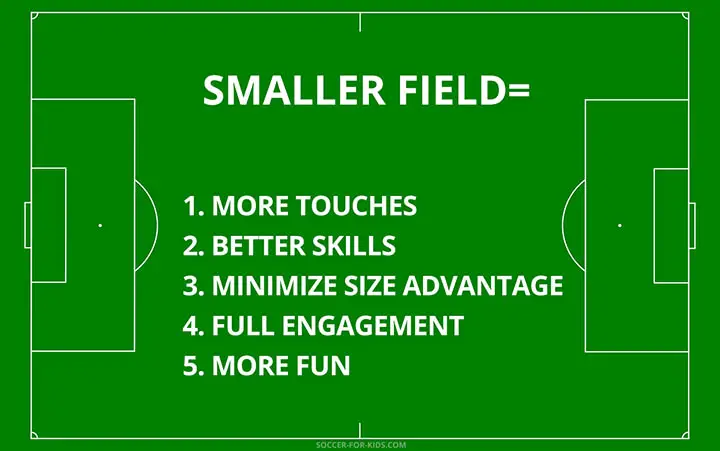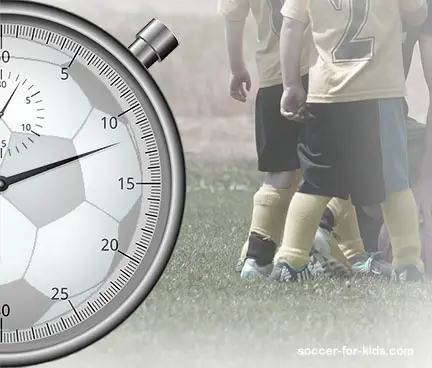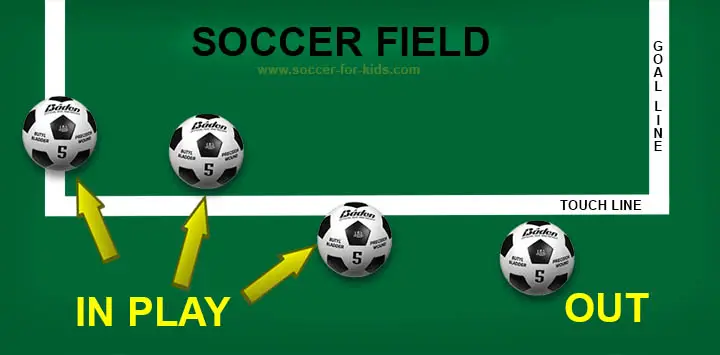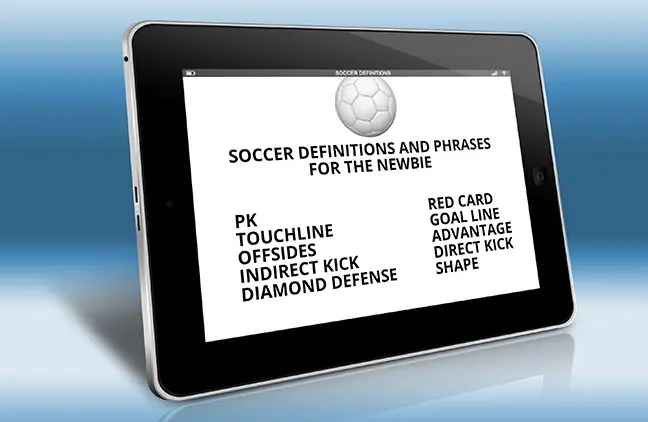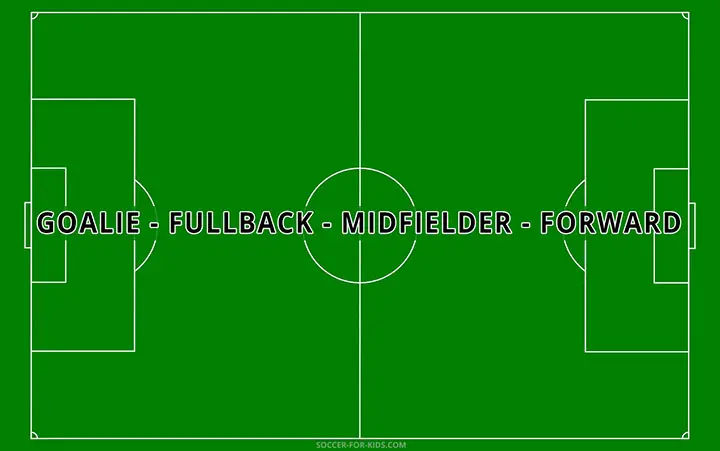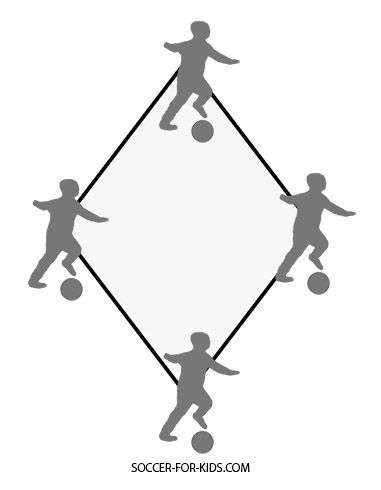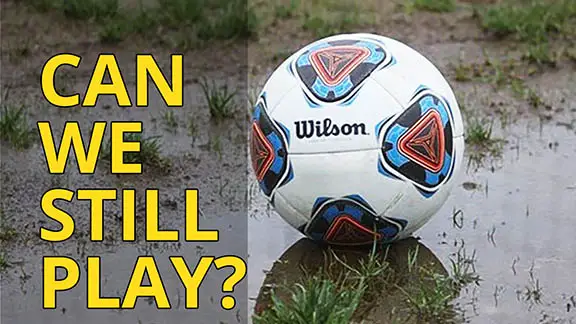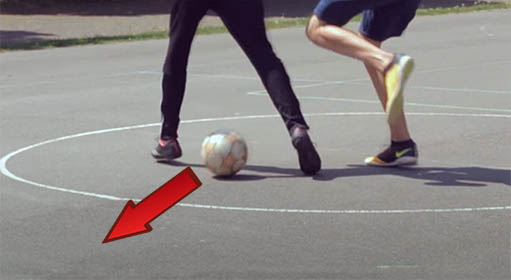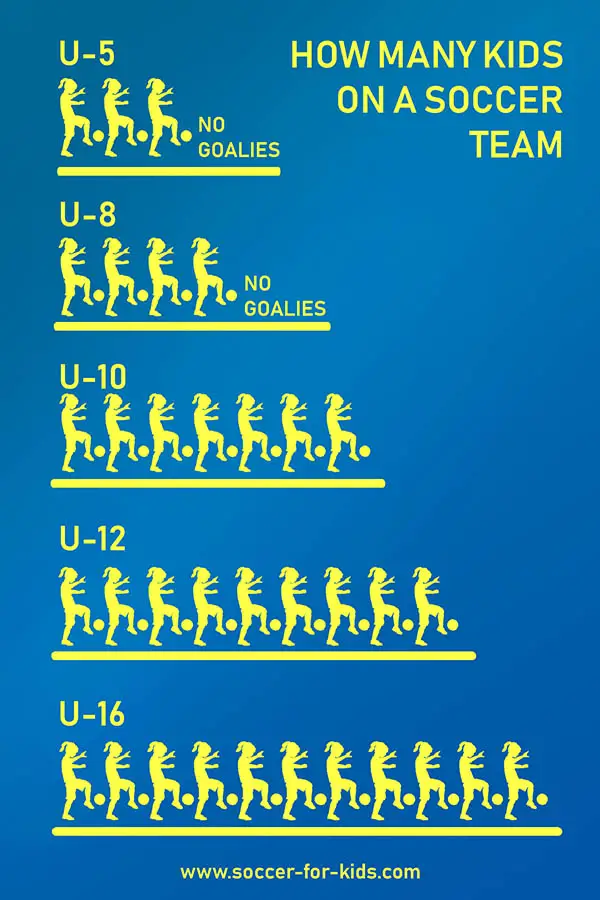Why Kids Play On a Small Soccer Field
The 5 benefits of small sided soccer
WRITTEN BY: COACH BRUCE LOVELACE
PUBLISHED ON: NOVEMBER 21, 2023
So you signed your kid up for youth soccer, but you're puzzled why there's only 4 kids for each team on the field. Surpassingly, there are several good reasons to play small sided soccer on a field that's much smaller than a regulation soccer field.
Whether it's for the actual youth soccer matches or just a variety of different games played during kids soccer practices, here are the main benefits of playing with fewer players on smaller soccer fields.
1. TOUCHES
The smaller the field the more likely that each soccer player will get "touches" on the ball. Just likes other sports, repetition is the mother of learning. Trapping and kicking opportunities will increase when there is a smaller area available to play in.
The more opportunities that the kids have to learning how to control the ball the better off they'll be. How much development would a 3 year old soccer player get standing on a full sized soccer field with 21 other children and only getting to the kick the soccer ball a few times.
 More Touches = Improved Skills
More Touches = Improved Skills2. SKILLS
The development of technical skills come before the need for fitness development. The importance of fitness for kids grows along with their age groups. Kids will improve their dribbling, passing, and shooting skills more quickly with small sided games on a smaller soccer field.
The very youngest soccer players will fatigue quickly if there is excess running on a larger soccer field. Toddlers and preschool age soccer players have not developed physically enough to handle such a large space as a full-sided soccer field. Although there are often exceptions, most young children's level of enjoyment will be diminished if they feel tired.
Playing on smaller youth soccer fields will reduce the time spent on running and add more interactions with the soccer ball for learning better timing and control.
3. NEUTRALIZE ADVANTAGES
Particularly in youth soccer, the fastest kids often dominate play. The advantage in speed is enhanced when playing on a large field. Small soccer fields with smaller spaces create a more level playing situation.
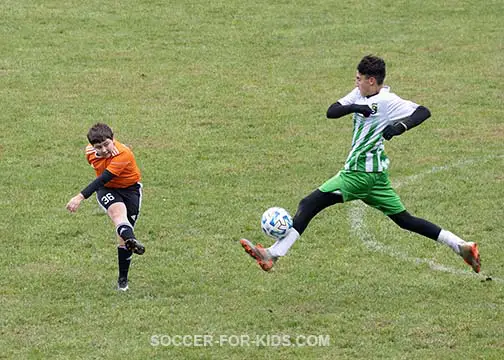 "Size Matters" when it comes to youth soccer players and field dimensions.
"Size Matters" when it comes to youth soccer players and field dimensions.The bigger stronger kids can kick the soccer ball farther which becomes an additional advantage on a large soccer field. Small sided soccer fields minimize the natural advantages that bigger, stronger, faster kids have over the smaller, less strong players.
4.ENGAGEMENT
Young soccer players can become dis-interested in the action on the field if it is a good distance away. Keeping the field small means the soccer ball is not very far away. Kids tend to pay more attention to the activity on the filed if the ball is closer to them.
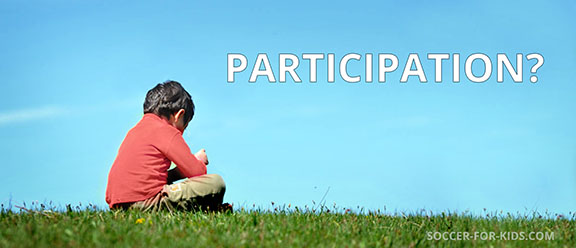 Small-sided soccer fields keep the kids engaged.
Small-sided soccer fields keep the kids engaged.You've likely seen the kids in the outfield during a Tee Ball game, chasing butterflies, rather than being part of the infield action. Similarly, the kids playing a defensive sweeper position on a large soccer field may lose attention to the game if the soccer ball is far away at the offensive end of the field.
why we play small sided games
5. ENJOYMENT
The question of why we play small sided games has many answers. The most important reason for playing small sided games in youth soccer is that it's more fun for the kids. The intensity level can be higher, the decision making comes quicker, and the reaction times need to be faster.
Can you imagine how much the level of fun would decrease for adults soccer players to play on a soccer filed that was 300 yards long? That would be a similar situation as to have 3 year old soccer play on a field that's 50 yards long.
why not to play small sided soccer
When we look for reasons not to play small sided soccer games on smaller soccer fields, two disadvantages come to mind. Not as many kids can play at one time in any game and fitness development cam be hampered by the reduced running in the confined space of a small sided field.
PARTICPATION
The number of kids that can play in a game at any one time is more limited when playing soccer on a smaller field. For the youngest of soccer players who may only play 3v3 or 4v4 (without goalies), you can only have 6 or 8 players actively playing in the soccer match at one time.
For towns that have ample space, you can lay out more fields and adjust the size of the teams so that the number of kids waiting on the bench is limited.
FITNESS
Smaller fields limit the distances the kids run on the soccer field. Although improved fitness is one of the biggest benefits of playing soccer and carries over to other sports, kids won't gain the same level of strength and endurance when they play soccer on a small field.
Of course, one way to combat this is to set up your team sizes so that kids do get a good amount of playing time. It all goes back to finding the right way to setting up the size of team rosters along with the number of players in each game.
I hope reading this post on the pluses and minuses of playing small sided soccer games on a smaller field was informative. For related topics see the links below my signature, or search using the Google search box below.
Keep it fun!


Soccer coach Bruce Lovelace started playing soccer in 1974 when, as a young boy, he constructed his own makeshift soccer goal. He played in high school, then in college and beyond. He started to coach his own children in the 1990s and then ran a Soccer Shots franchise for 12 years. Now, Coach Bruce publishes the soccer-for-kids.com website. Find out more about youth soccer coach Bruce Lovelace and what inspires this website.
Soccer-for-kids.com is a participant in the Amazon Services LLC Associates Program, an affiliate advertising program designed to provide a means for sites to earn advertising fees by advertising and linking to Amazon.com
